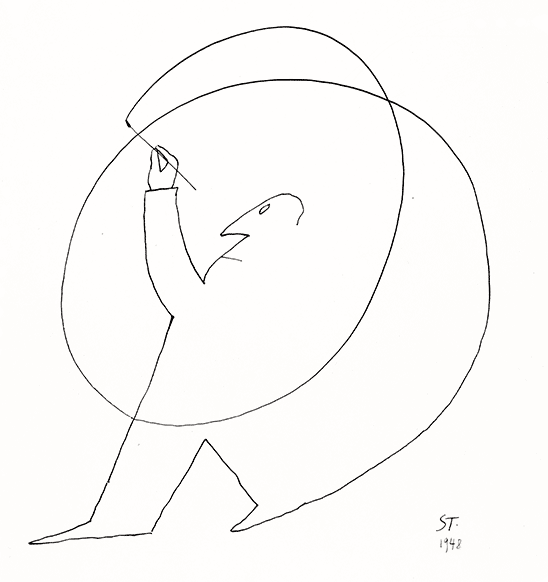1959
January-February, through his friend, violinist Alexander Schneider, meets photographer Inge Morath, recently arrived in New York.
Makes first paper-bag masks, using brown supermarket bags to create a variety of social types. Continues to produce such masks into the mid-1960s. Morath photographs ST wearing some self-portrait masks. In 1961, she collaborates with him on a series of photos with people wearing other ST masks—“different people,” she said, “adapting their bodies and gestures to the Steinbergian persona they wore as a mask.”
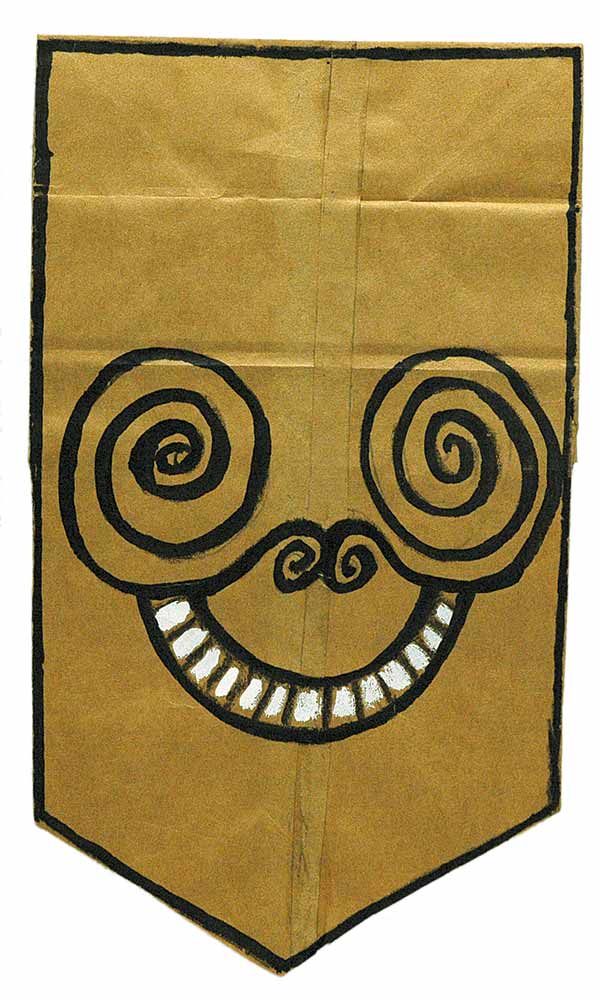
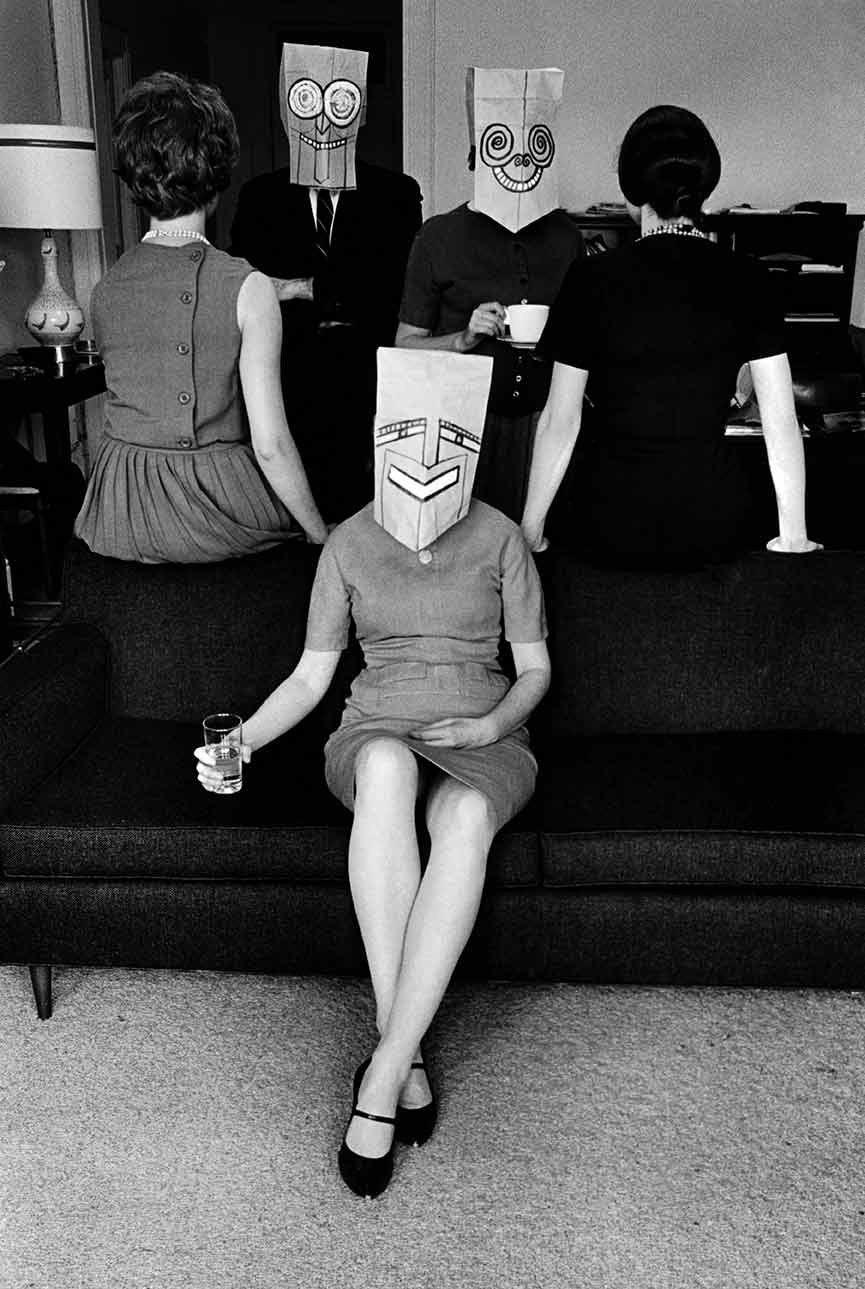
January 17, his third New Yorker cover, The Pursuit of Happiness (also known as Prosperity), marks the beginning of his years as a regular cover contributor; it is also the first of his covers with a sociopolitical theme.
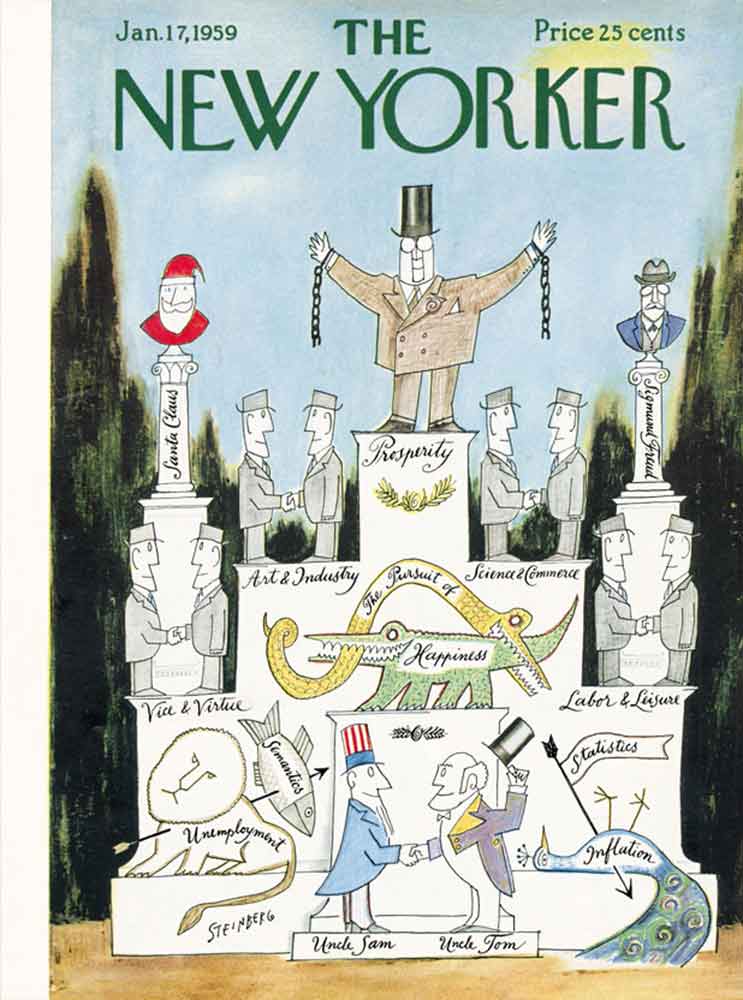
March 13, The Count Ory, a comic opera by Gioachino Rossini, opens at the Juilliard Opera Theater, New York, with backdrops by ST.
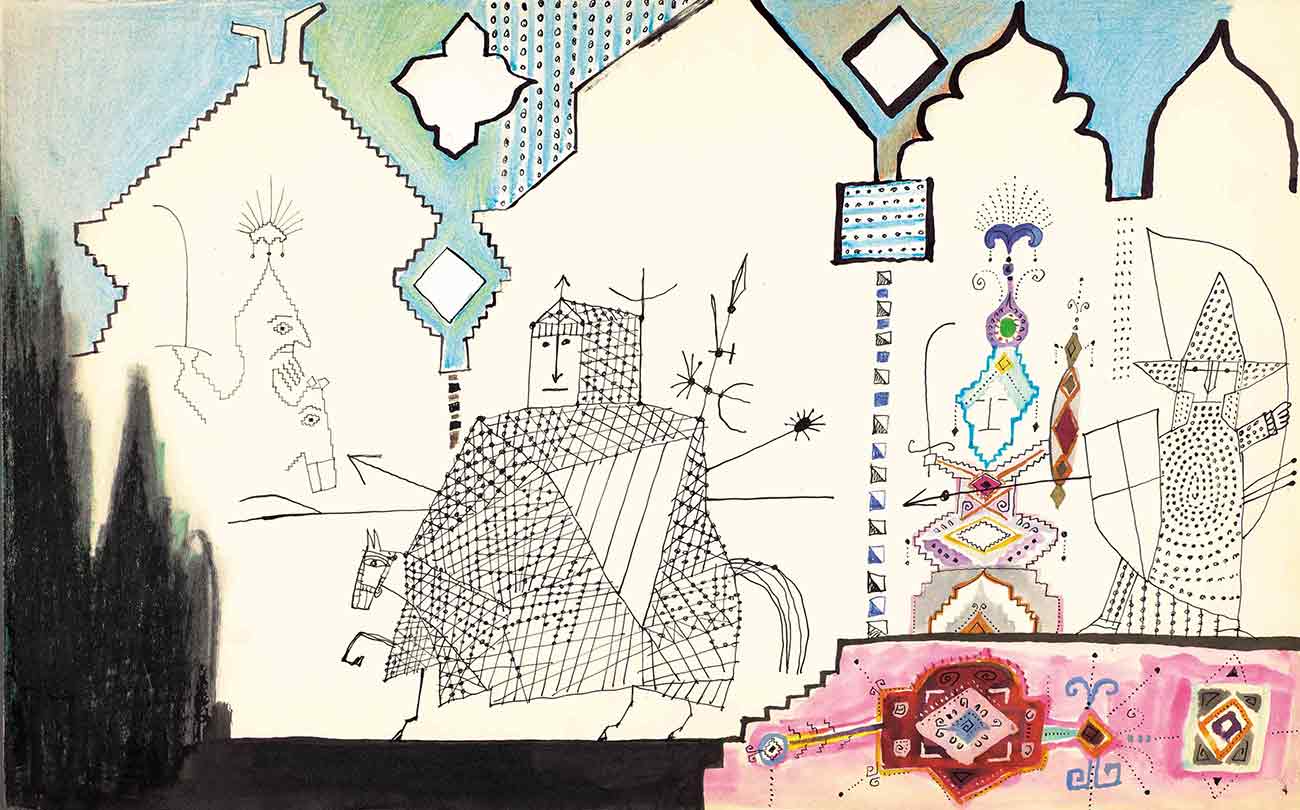
May 22, completes purchase of house on Old Stone Highway in Springs, within the district of Amagansett, on the eastern end of Long Island. The house is across the road from Costantino and Ruth Nivola, who remain among his closest friends. It will become his refuge from the busy life of New York.
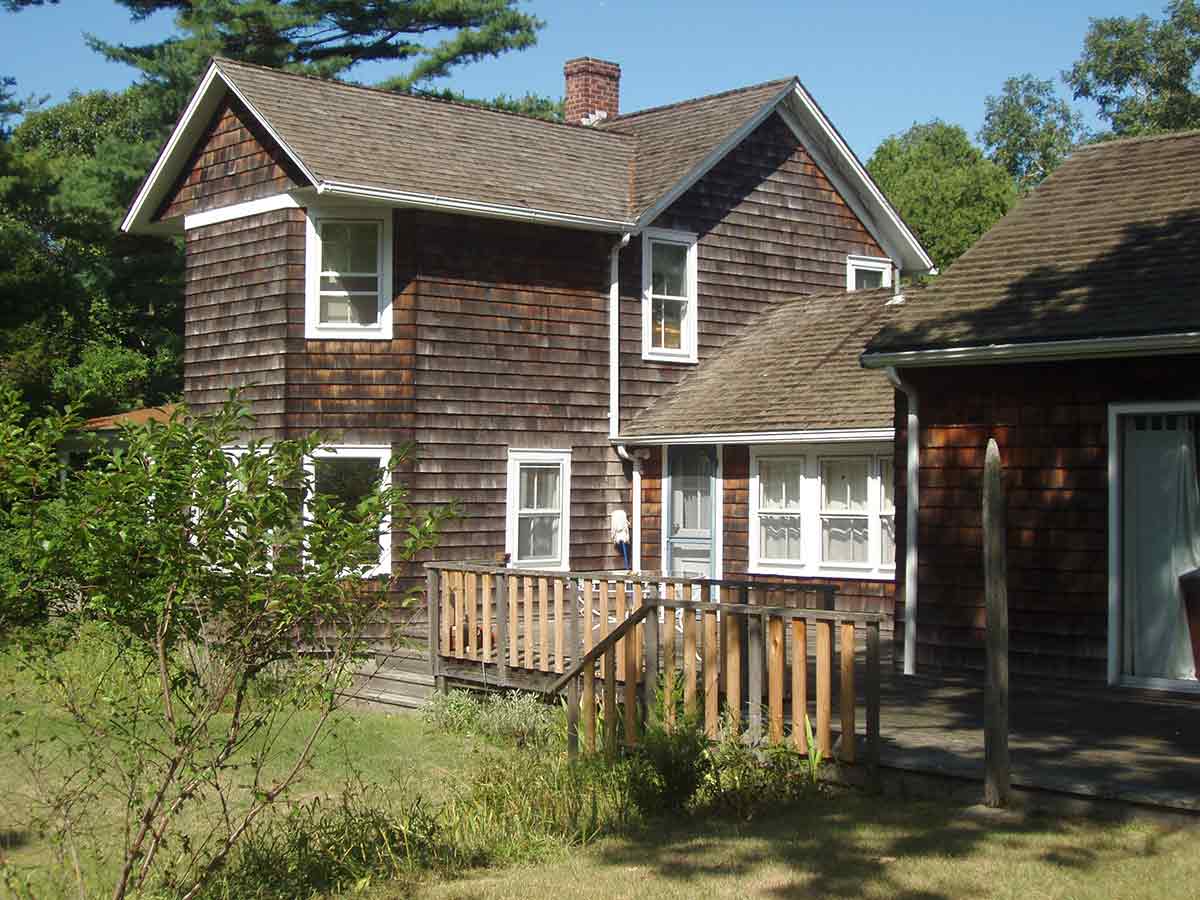
August, trip to Utah, Nevada, Colorado, Arizona, and Texas by plane, car, train, and bus. Of Las Vegas, he reports: “I’m disgusted. Even the cigarette machines are crooked here. Most of the time they take money & give you nothing.” Describing a visit to cousins in Denver: “They live in a ranch-type house in a block with a ranch-type synagogue.”
Agrees to design full-color calendars for Hallmark instead of Christmas cards. The first one appears in 1960, the last in 1969.
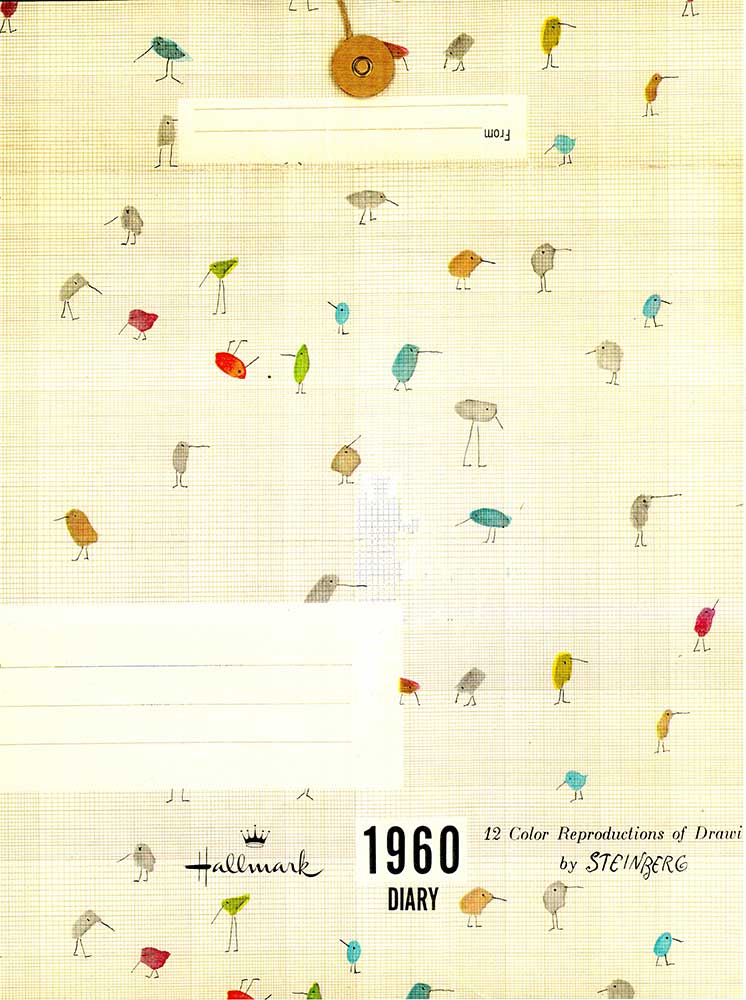
Is rereading all of James Joyce, “which now I understand—in part. A great loss of time not to have understood it years ago.”
